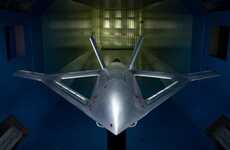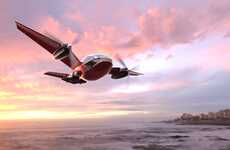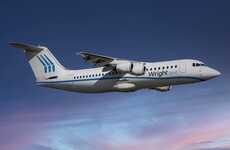
X-48B BWB
Ben Preiss — September 20, 2007 — Unique
References: crave.cnet & sciencedaily
The experimental remote controlled Blended Wing Body aircraft has successfully completed six flights at NASA's Dryden Flight Research Center on Edwards AFB, Calif. This design is more efficient than conventional aircraft design and could be a model for future aircraft including commercial airliners.
"NASA is interested in the potential benefits of the aircraft - increased volume for carrying capacity, efficient aerodynamics for reduced fuel burn, and, possibly, significant reductions in noise due to propulsion integration options," Science Daily said. "In these initial flights, the principal focus is to validate prior research on the aerodynamic performance and controllability of the shape, including comparisons of flight test data with the extensive database gathered in the wind tunnels at NASA's Langley Research Center in Virginia."
"NASA is interested in the potential benefits of the aircraft - increased volume for carrying capacity, efficient aerodynamics for reduced fuel burn, and, possibly, significant reductions in noise due to propulsion integration options," Science Daily said. "In these initial flights, the principal focus is to validate prior research on the aerodynamic performance and controllability of the shape, including comparisons of flight test data with the extensive database gathered in the wind tunnels at NASA's Langley Research Center in Virginia."
Trend Themes
1. Experimental Remote Controlled Aircraft - The development of remotely-controlled aircraft opens up opportunities for unmanned transportation and surveillance systems.
2. Blended Wing Body Design - The Blended Wing Body design offers improved fuel efficiency and carrying capacity, disrupting the traditional aircraft design.
3. Propulsion Integration Options - Exploring integration options for propulsion systems in aircraft contributes to reducing noise pollution and enhancing flight efficiency.
Industry Implications
1. Aerospace - The aerospace industry can leverage experimental air crafts to develop cutting-edge technologies for various applications, such as commercial airliners and unmanned systems.
2. Transportation - The transportation industry can benefit from the use of remotely-controlled aircraft for unmanned cargo transportation and surveillance operations.
3. Aeronautics Research - The aeronautics research sector can explore the Blended Wing Body design to revolutionize aircraft design and improve aerodynamic performance.
2.2
Score
Popularity
Activity
Freshness























